The ANKE Experiment
The ANKE Experiment (Apparatus for Studies of Nucleon and Kaon Ejectiles) is an internal magnetic spectrometer at the COSY accelerator. Depending on their momenta and charge, the ejectiles produced in beam-target collisions are separated by the D2 dipole magnet. After leaving the interaction zone these particles are registered by a detection system, consisting of multi-wire proportional chambers, scintillation hodoscopes, Cerenkov counters and semiconductor detectors.
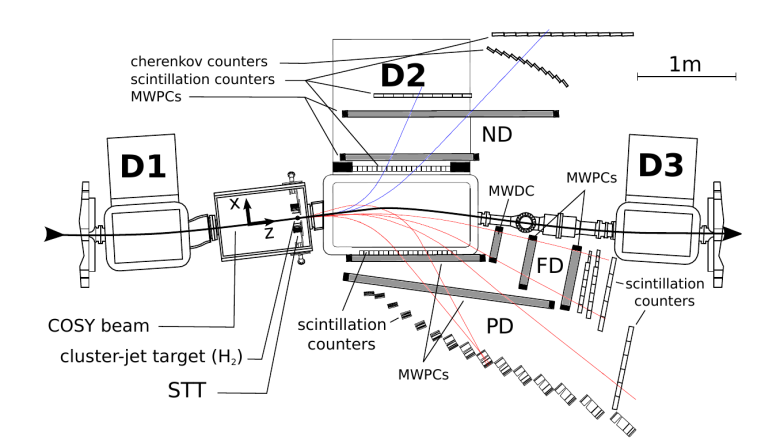
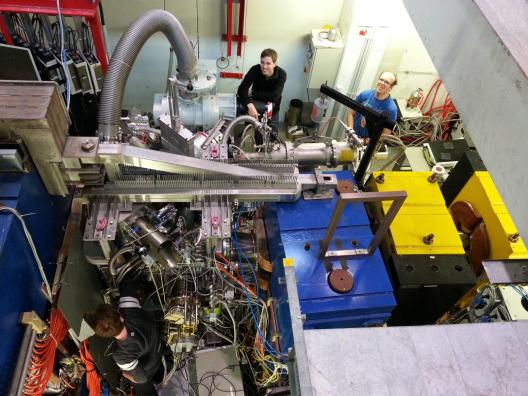
An intensively studied topic at ANKE is the production of mesons, i.e states made of quarks and antiquarks, in order to study their properties and interactions.
Currently our group was concentrating on the investigation of the following reactions:
d + p -> ³He + η
p + n -> d + η
p + n-> d + π+ + π-
If, e.g., the transversal momentum of detected ³He ejectiles is plotted versus the longitudinal momentum (center-of-mass system) the first reaction can easily be identified. This is illustrated in the following figure.
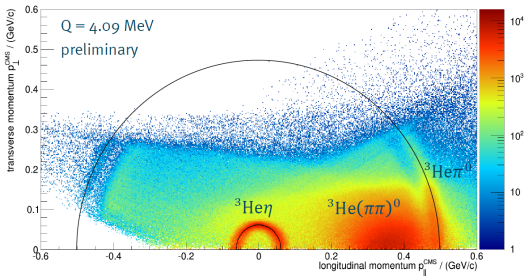
The reaction: d + p -> 3He + η
This reaction is highly suited to investigate the interaction between η mesons with ³He nuclei. Precision measurements performed by our group have proven that both the total and differential cross sections are of particular interest since they show a clear deviation from pure phase space expectations.
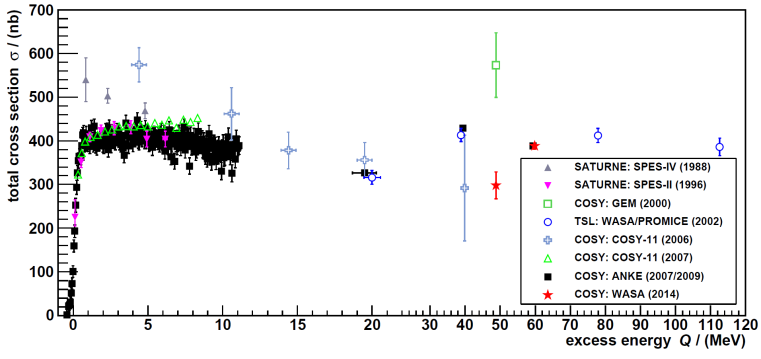
The steep rise of the cross section for example at low excess energies is a clear evidence for a strong final state interaction of the ejectiles and is an indication for the existence of a bound state of the ³He η system.
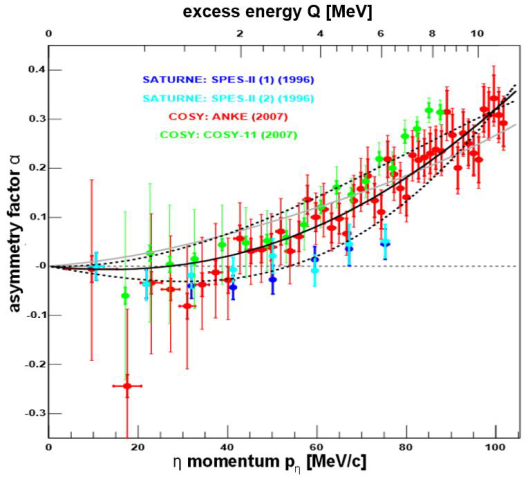
Moreover, analyses of the differential cross sections show a distinct angular asymmetry α, which points to rapid change in the relative phase of the involved partial waves. All these effects are strong hints for an unexpectedly strong final state interaction between η-mesons and ³He and hence for a quasi-bound state of the ³He η system.
The reaction: p + n => d + η
In addition to the measurement on the interaction between ³He and η mesons, the production of η mesons in proton neutron collisions is investigated at the ANKE experiment. This reaction allows to determine the interaction between η mesons and deuterons, which is of high interest for the investigation of possible eta-mesic nuclei. In addition these data will allow to determine the fundamental interaction between η mesons and nucleons in more detail.
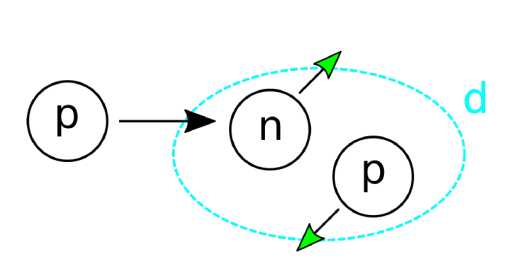
At ANKE this reaction was investigated by using the so called spectator kinematics. In this case the proton beam collides with the neutron of a target deuteron. The remaining proton of the deuteron is assumed to be a spectator in this reaction and its kinetic energy, which is a measure of its Fermi momentum at the moment of the interaction, can be registered by a special detector. Due to the (known) Fermi momentum distribution, even with a fixed accelerator beam energy cross section data can be obtained for a wide excess energy range.
The reaction: p + n -> d + π+ + π⁻
Aside from investigations of η mesons other reactions with pions involved provide manifold insights. In nucleon-nucleon or nucleon-nucleus scattering processes with two pions produced an explicit deviation from phase space behaviour can be found under certain circumstances. This can be seen most clearly in the invariant mass distribution of the ππ-system. As can be seen in the lower picture for the reaction d + p => ³He+ π+ + π-, there is a considerable excess at low invariant masses, equivalent to a small relative momentum of the particles, compared to the expected distribution.
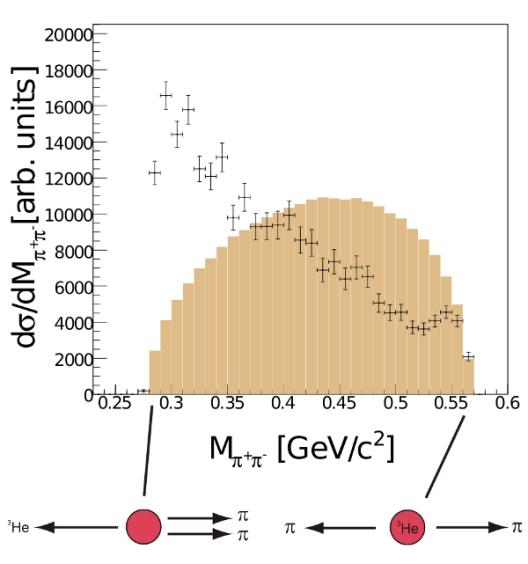
This phenomenon was observed for the first time approximately 50 years ago and is known as the ABC effect, according to the names of its discoverers, A. Abashian, N.E. Booth and K.M. Crowe. Its cause is discussed to be associated with the excitation of nucleon resonances but it is still not fully understood which resonances participate and which processes contribute.
Because of the good momentum resolution the data taken with the ANKE detector system will provide an important contribution to the understanding of the ABC effect and the according physics.
More informationen can be found on the official ANKE-Experiment website.
